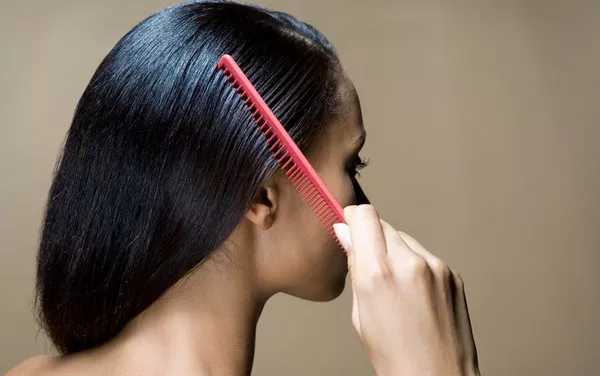Perms, also known as permanent waves, have been a popular hair styling technique for decades, offering individuals the opportunity to achieve long-lasting curls or waves. However, concerns about the potential damage perms can cause to the hair have led many people to question whether getting a perm is worth the risk. In this article, we’ll explore the effects of perms on hair health and whether they have the potential to ruin your hair.
Understanding Perms
Before discussing the potential impact of perms on hair health, it’s essential to understand how the perm process works:
Chemical Treatment: Perms involve the use of chemical solutions to break and reform the bonds in the hair shaft, allowing it to take on a new shape. The hair is wrapped around rods or rollers of various sizes, and the perm solution is applied to the hair to alter its structure.
Neutralization: After the hair has been processed with the perm solution, a neutralizer is applied to stop the chemical reaction and lock in the new shape of the hair. This step is crucial for ensuring that the curls or waves created by the perm are long-lasting.
Maintenance: Permed hair requires special care and maintenance to keep it looking its best. This may include using sulfate-free shampoos and conditioners, avoiding excessive heat styling, and getting regular trims to prevent split ends.
Potential Damage from Perms
While perms can create beautiful curls or waves, they have the potential to cause damage to the hair if not performed properly or if the hair is already compromised. Here are some potential ways perms can damage the hair:
Dryness: The chemicals used in perms can strip the hair of its natural oils, leading to dryness and brittleness. This can make the hair more prone to breakage and split ends.
Damage to the Hair Shaft: The chemical process of perming can weaken the hair shaft, making it more susceptible to damage from heat styling, brushing, and other styling techniques.
Overprocessing: If the perm solution is left on the hair for too long or if the hair is processed with a solution that is too strong, it can lead to overprocessing, resulting in hair breakage and damage.
Chemical Burns: In rare cases, individuals may experience chemical burns or irritation from the perm solution, particularly if it comes into contact with the scalp or skin.
Incompatibility with Previous Treatments: Perms may not be suitable for hair that has been previously treated with certain chemicals, such as bleach or hair dye. Mixing incompatible treatments can result in damage to the hair.
Mitigating Damage from Perms
While perms have the potential to cause damage to the hair, there are steps you can take to minimize the risk and keep your hair healthy:
Consult a Professional: It’s essential to have your perm done by a qualified and experienced hairstylist who can assess the condition of your hair and recommend the best type of perm for your hair type and texture.
Choose the Right Products: Use hair care products specifically formulated for permed or chemically treated hair, including sulfate-free shampoos and conditioners that help retain moisture and protect the hair.
Limit Heat Styling: Minimize the use of heat styling tools such as flat irons and curling irons, as excessive heat can further damage permed hair. Instead, embrace air-drying or use heat protectant sprays before styling.
Avoid Overprocessing: Follow the instructions provided by your hairstylist for the perm process, and avoid leaving the perm solution on your hair for longer than recommended. Overprocessing can lead to hair damage and breakage.
Regular Maintenance: Schedule regular trims to keep your permed hair looking its best and prevent split ends. Additionally, consider getting touch-up perms or treatments as needed to maintain the shape and condition of your curls or waves.
Conclusion
In conclusion, while perms can create beautiful curls or waves, they have the potential to cause damage to the hair if not performed properly or if the hair is already compromised. It’s essential to consult a professional hairstylist who can assess your hair’s condition and recommend the best type of perm for your hair type and texture. By choosing the right products, limiting heat styling, avoiding overprocessing, and practicing regular maintenance, you can minimize the risk of damage from perms and keep your hair looking healthy and vibrant. If you’re concerned about the potential damage from perms, consider exploring alternative styling options or discussing your concerns with a hairstyling professional.
How To Fix Heat Damaged Curly Hair

